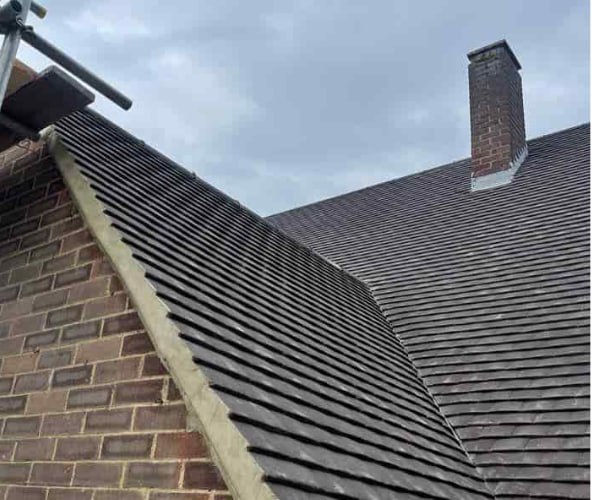Flat Roof Leak Detection: How to Spot Problems Early
Flat roofs are a popular choice for both residential and commercial buildings due to their modern look and practical space utilisation. However, like all roofing systems, they are susceptible to leaks. Early detection of these leaks is crucial to prevent extensive damage. At JYT Roofing Hitchin, we aim to equip homeowners with the knowledge to identify potential issues early. Here’s how to spot problems with your flat roof before they escalate.
1. Regular Inspections
Conducting regular inspections is the first step in early leak detection:
- Visual Checks: Inspect your flat roof at least twice a year, preferably in spring and autumn, and after any severe weather conditions. Look for visible signs of damage such as cracks, blisters, or ponding water.
- Interior Signs: Regularly check the interior ceilings and walls for water stains, mould growth, or any other signs of water infiltration.
2. Signs of Water Damage
Water damage can manifest in various ways, both inside and outside your home:
- Stains and Discolouration: Brown or yellowish stains on the ceiling or walls are a clear indication of water leakage.
- Peeling Paint or Wallpaper: Excess moisture can cause paint and wallpaper to peel away from the surface.
- Musty Odours: Persistent damp or musty smells often accompany hidden water damage and mould growth.
3. Ponding Water
Ponding water is a common issue with flat roofs and a significant indicator of potential leaks:
- What to Look For: After a rainstorm, check for areas where water collects and remains for more than 48 hours. Persistent ponding can lead to material degradation and eventual leaks.
- Solutions: Ensure proper drainage solutions are in place. This might involve clearing debris from drains or installing additional drainage systems.
4. Cracks and Blisters
Cracks and blisters in the roofing material can indicate underlying problems:
- Blisters: These are raised areas where air or moisture has become trapped under the roofing material. While small blisters are generally harmless, larger ones can burst and lead to leaks.
- Cracks: Look for any cracks in the roofing material, especially around seams and edges, as these are common entry points for water.
5. Flashing Issues
Flashing is critical in preventing water ingress where the roof meets walls, chimneys, or other structures:
- Inspect Flashing: Regularly inspect the flashing for signs of rust, cracks, or gaps. Damaged flashing can allow water to seep into the roof structure.
- Professional Repair: Damaged flashing should be repaired or replaced by a professional to ensure it provides effective protection.
6. Vegetation Growth
Unexpected vegetation growth on your roof can be a sign of moisture retention:
- Moss and Algae: While moss and algae can look harmless, they hold moisture against the roof surface, which can lead to damage over time.
- Root Damage: Plant roots can penetrate the roofing material, creating entry points for water.
7. Professional Inspections
While regular self-inspections are essential, professional inspections provide a thorough assessment:
- Expertise and Tools: Roofing professionals have the expertise and tools to detect problems that might not be visible to the untrained eye.
- Regular Maintenance: Schedule professional inspections annually or biannually to catch potential issues early and extend the lifespan of your roof.
Conclusion
Early detection of leaks in a flat roof is crucial to preventing extensive and costly damage. By conducting regular inspections, addressing signs of water damage promptly, and utilising professional roofing services, homeowners can maintain the integrity and longevity of their flat roofs. At JYT Roofing Hitchin, we are committed to providing expert roofing services to help you keep your property in top condition.
Call us on: 01462 418 494
Click here to find out more about JYT Roofing Hitchin
Click here to complete our contact form and see how we can help with your roofing needs.

